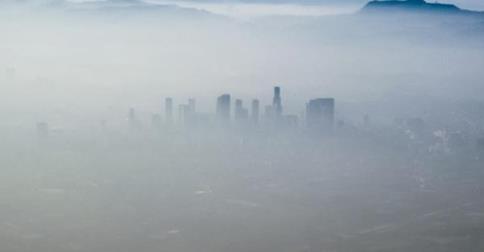(This post originally appeared on EDF Voices)
Robert S. Donovan
The Environmental Protection Agency last week released much-awaited, tighter standards for smog pollution, common-sense protections that will save lives and safeguard human health from one of the nation’s most ubiquitous air pollutants – ozone.
As expected, it took but a few hours before critics lashed out, while ignoring key facts behind EPA’s proposal. Here are five reasons EPA is on the right track:
1. The current standard doesn’t do enough to protect human health
About half our population, some 156 million Americans, areat risk from smog, or ground-level ozone, because of age, health conditions, or the work that they do. They include more than 25 million people with asthma, 74 million children, 40 million senior citizens, and nearly 17 million outdoor workers.
Our current standard of 75 parts per billion (ppb) doesn’t adequately protect human health.
EPA’s new proposal, issued under a court-ordered deadline, is a step in the right direction – even if it doesn’t, in our view, go far enough.
Consider this: The proposed 65 to 70 ppb limit would prevent between 320,000 and 960,000 asthma attacks in children and up to 1 million lost school days. It would also prevent up to 180,000 lost work days and an estimated 750 to 4,300 premature deaths.
2. Clean air is good for the economy
By law, the issue of cost cannot be factored in when setting a health-based standard. But even if costs were considered, the conclusion remains that clean air is good for the economy.
Since 1970, the benefits of the Clean Air Act have outweighed costs by 30 to 1, and a similar trend is expected to hold true also for the proposed smog standards.
In fact, in Texas, the state agency charged with protecting public health and natural resources, concluded that Houston’s gross domestic product increased as smog concentrations dropped.
3. EPA’s action is backed by science
The proposed standard, set to be finalized in October 2015, has been recommended repeatedly by EPA’s Clean Air Scientific Advisory Committee, an independent panel of leading scientists, as well as by medical and public health professionals nationwide.
There’s overwhelming evidence showing that smog affects millions at the existing standard of 75 ppb.
In fact, EPA is also seeking comments on a health standard that would limit exposure to 60 ppb – a standard that would provide the strongest protections for Americans and be in line with what groups such as the American Lung Association recommend.
4. Smog pollution measures are nothing new
The United States has already taken steps over the past few years that help to cost-effectively reduce smog pollution and help restore healthy air.
Those protections include the Tier 3 tailpipe standards, supported by the U.S. auto industry, which will slash smog-forming pollution from new cars beginning in model year 2017. Meanwhile, EPA’s proposed Clean Power Plan will reduce smog-forming pollutants from power plant smokestacks nationwide.
These standards will work in tandem to cut pollution and spur new innovation. America has shown time and time again that we can innovate and come up with solutions for industry that make new regulations affordable.
5. It’s time we catch up with other developed nations
Once a leader in environmental protection, the U.S. now lags behind other developed and developing nations in the protectiveness of air quality standards for smog.
Numerous industrialized countries have adopted ozone standards that are far more protective than the current standard in the U.S. The European Union’s limit today is 60 ppb and Canada’s is 63 ppb, for example.
Some of these countries are doing as well, or better, economically than the U.S.
For this and all other reasons mentioned here, EPA’s new smog standards will help us breathe easier.
